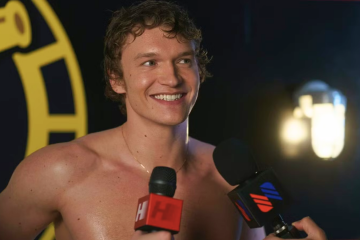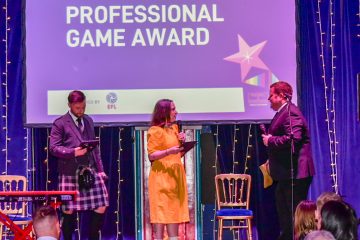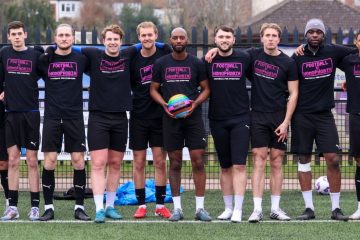‘Gears for Queers’: Cycling, writing, and Our Pride Ride
Lili Cooper and Abi Melton – the authors of new book ‘Gears for Queers’ – join us for a special Q&A to mark #OurPrideRide…
By Zoe Vicarage
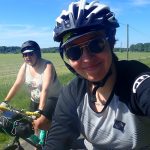
Four years on from Lili Cooper and Abigail Melton’s first cycle tour from Amsterdam to Montpellier, they’ve put their passion for long-distance bike rides into a new book.
‘Gears for Queers’ has emerged from a series of recipe zines that the couple made following their tour. To mark its publication, the pair recently biked around their hometown of Kirkcaldy delivering copies of the novel.
I spoke to Lili and Abi to find out more about the book, their passion for cycling, and the importance of #OurPrideRide – a new initiative in the sport to show support for the LGBT+ community.
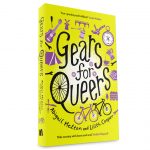
ZV: Hi Lili and Abi! Tell us all about ‘Gears for Queers’ – where did the idea come from?
Lili: ‘Gears for Queers’ is a shared account of a cycle tour that we did in 2016, when we rode from Amsterdam in the Netherlands to Montpellier in the south of France over about 90 days. It was our first experience of cycling touring and the first time either of us had done any long-distance cycling. It was a steep learning curve – but really enjoyable.
The book basically came about because we make zines, which are self-published pamphlets and booklets. When we got back from the tour, we started making some zines about recipes, as we were making a lot of meals that were calorie-dense but we didn’t want to stick to the same repetitive recipes every night.
We were living in Edinburgh and a couple of the zines made their way into the hands of Kay at Sandstone Press, who are now our publishers. She reached out to us because Sandstone do a lot of outdoors stuff, and she was really keen to diversify some of the stories they were telling. She said, ‘have you thought about writing a book?’ We said, ‘no we haven’t, but we’ll happily give something a go!’ Kay suggested to try 10,000 words, have a think about how we wanted to tell the story, and send them to her.
We did the first 10,000 words and the book really came from that – Kay said keep going and we kept writing. Over the course of writing and editing, it took about two-and-a half-years from first idea to publication.
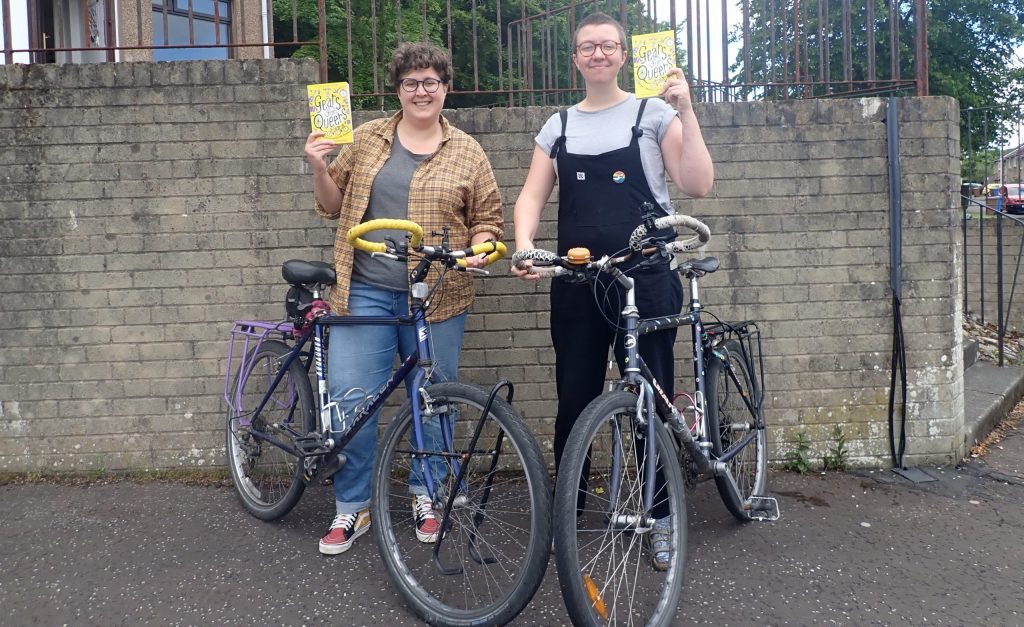
To have the book out after that long period of working on it must be thrilling for you both…
Abi: It’s incredibly exciting and a little bit surreal as well. When we were writing, neither of us thought about the book being real – when we finally got copies of it, we were like ‘oh my god, it’s an actual copy!’ Having now had it published, we’re suddenly realising that people are going to start reading it. It’s a very strange experience.
Lili: Both of us were feeling nervous all the way up to publication day. But since then, we’ve had people sending us messages on social media and having conversations about the book which has been super rewarding – such a positive experience.
A week on from publishing, what responses have you been getting to the book?
Lili: We’ve had some lovely feedback from people who really relate to some of the things that we talk about in the book. It’s been so nice, especially within the LGBTQ+ community, and feeling that kind of connection and resonance.
Abi: We’re learning quite a lot about the book that we hadn’t realised we’d put into it. When we wrote it, we were just telling this story of our tour and we wanted to write that as honestly as possible. We’re realising now that many people are taking quite a lot from our relationship in the book, and that’s something we weren’t expecting.
Have you both always been into cycling?
Lili: I grew up in Cambridge and as with a lot of people there, I spent most of my time in my childhood and adolescence on a bike, as it was my main form of transport. I never really took to cycling as a leisure hobby but then I’ve never not had a bike. But for Abi, it was different…
Abi: I learned how to ride a bike when I was younger and I used to ride in my neighbourhood up until I was about 14. After that, I kind of stopped riding. I write about it in the book that I had this sudden realisation that people are seeing my body in motion and I didn’t want to show them that anymore. There are statistics about teenage girls and how they stop riding their bikes past a certain age. It wasn’t until I moved to Cambridge when I was 22 that I got back on a bike. That was because I met Lili and my work was 20 minutes away and the buses in Cambridge are about £5 for a single. I just thought, I’m going to do it and get back on my bike.
It was rediscovering something that I loved as a child – a really lovely experience. I hadn’t ridden on roads before though so Lili had to teach me how to do that. I wouldn’t turn right so for the first maybe three months, Lili had to take me on routes that only turned left around the whole of Cambridge!
I’d never ridden anywhere long at all before the cycle tour. The most I think I did was maybe an hour in total. But then we were like, ‘let’s do this thing and go cycling in Europe!’
By writing the book, have you wanted to challenge the preconceptions around cycling?
Lili: We were really aware of those preconceptions. One of the things we talk about early on in the book is the reluctance to claim that term ‘cyclist’ because we weren’t part of a cycling club, we weren’t ‘leisure cyclists’, we didn’t have any Lycra, and we weren’t riding fancy bikes.
We were keen to articulate that other types of riding and cycling are valid. Challenging that division that says some people are commuters, some are cyclists, some cycle for transport, and some cycle for fun or a hobby. We thought that was an important thing to challenge, partly because it really informs cycling infrastructure – how it is prioritised, and how people think and talk about bike routes.
We wanted to show that isn’t the sort of thing you have to buy your way into, or prove that you belong in. There are lots of different types of ways to enjoy cycling and enjoy riding your bike, so everyone can co-exist.
We talk a bit about not feeling like we belong alongside cis white men in Lycra but at the same time, I don’t think we wrote it to say the way that we cycle is the alternative. Some of the people I ride with in Kirkcaldy now and who we really value in the cycling community are exactly that. It’s really about elevating everyone, and everyone feeling like they belong on a bike and can see themselves in cycling culture.
Abi: For me, I wanted to encourage people who maybe hadn’t been on their bikes for a while to get back on, as it had been such an important thing for me. On top of that, I’m a fat person that’s not particularly fit but I wanted to show you didn’t have to be super skinny or super confident on your bike to have an adventure. Getting on my bike opened so much of the world to me and it was something I was keen to say that you don’t have to be this certain type of person – just get out there and do it!
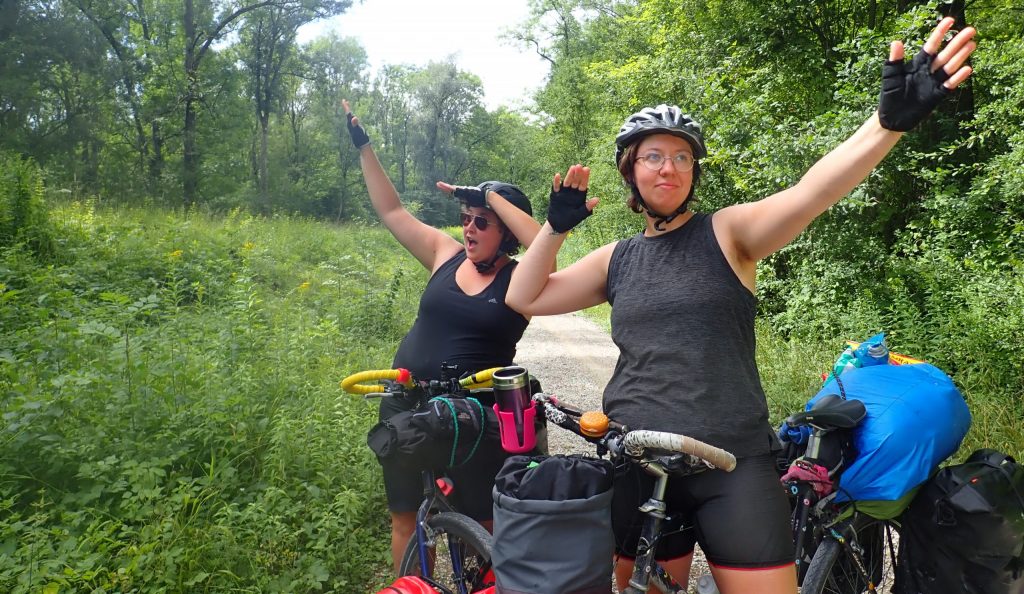
Queer representation isn’t something we see much of in cycling. Was that another reason for doing the book?
Lili: The book is called ‘Gears for Queers’ and obviously as a queer couple, that threads through so much of our narrative. But it was something our editor consistently called us up on through the first few drafts, because we didn’t articulate aspects of our queerness and being LGBTQ+ in the book.
It’s been an interesting thing to think and talk about as yes, we wanted to increase queer representation not just in cycling but also generally. So often when you’re LGBTQ+, you’re expected to write about that experience and that experience alone. So much of the book is about us being cyclists – we’re cycle tourers who are terrible at it! We’re complete fools and we don’t know what we’re doing!
All of these other aspects of our lives that queerness underpins are as much part of our identities. Sometimes it does peak up and become one of the more important things in any given moment, such as when we’re navigating new spaces and we’re having to have conversations about whether we’re out as a couple.
For me, I think being non-binary and feeling misgendered in different situations comes up. A lot of the time, it just sits there as one of the many facets of ourselves which is why I think we maybe didn’t explicitly articulate it in the way that sometimes people expect us to. Because it’s a book about being queer, but it’s also a book about being us.
When people read your book, what do you hope the main takeaway is for them?
Lili: One of the key things I’d like people to take away is a feeling of the joy of cycling, and cycling touring – a chance to see that things don’t have to look the way they think they have to look, and can still be valid and legitimate.
One of the messages which we relate over the course of the book is that as queer and disabled people, our cycle tour was never going to look like the cycle tours we saw when scrolling on Instagram. Actually, the way it looked was right for us and it was still such a positive experience.
One of the things we’re trying to talk about in the book is representation as well. There are so many different ways of doing cycling and cycling touring. They’re all stories that are worthy of telling.
Abi: On a very basic level, to inspire someone to get back on their bikes brings me joy. When someone tells me that they’ve got their bike out of the shed and they’re doing it up or that they’ve bought themselves a bike. I’m just incredibly happy that a book, our book, could inspire someone to do that.
There’s been a big upturn in people cycling during lockdown. You must be delighted seeing that…
Lili: Totally. It’s a real opportunity to sustain that momentum. My job at the moment involves promoting cycling to students and staff at a local college. It’s been really nice seeing people who haven’t previously engaged in those conversations around cycling getting involved, as well as seeing neighbourhoods and communities starting to talk about what we want our towns and cities to look like.
It’s been one of the big conversations that people have started to add their voices to. We’ve had this great opportunity in Scotland with funding being offered to local councils so it’s a really exciting chance for people to advocate for the streets they want to see used for cycling.
How important is this weekend’s #OurPrideRide initiative to the LGBT+ community?
Lili: It’s really important right now as a way to feel connected when we’re having to physically distance. Certainly for people living in small towns like ours who are maybe feeling isolation and the lack of physical community.
Kirkcaldy, where we live, is the home of Fife Pride and that’s such a special event for people to physically feel like they belong in a community, even when they don’t have that at home or in their neighbourhoods.
Things like #OurPrideRide are so important because they give you the chance to feel part of something, like a Pride march. We’re going to be riding round in some combination of rainbow things with protest signs strung to our backs so that we’re visible for that moment too.
When I was younger, I know having people who were visible and joyfully queer on the streets was helpful in having a positive feeling in my own identity.
Abi: I wish I had more of that growing up in King’s Lynn in rural Norfolk, as there was no queer visibility at all. Having #OurPrideRide matters so much.
Thank you to Lili and Abi for talking to us about ‘Gears for Queers’ – you can learn more about the book on the Sandstone Press website. Buy a copy from your local independent bookseller, from the Sandstone website, or get a signed edition here.
Check out the ‘Gears for Queers’ website and follow on both Twitter and Instagram at @gearsforqueers. You can also find Lili on Twitter at @Coops_LJ
